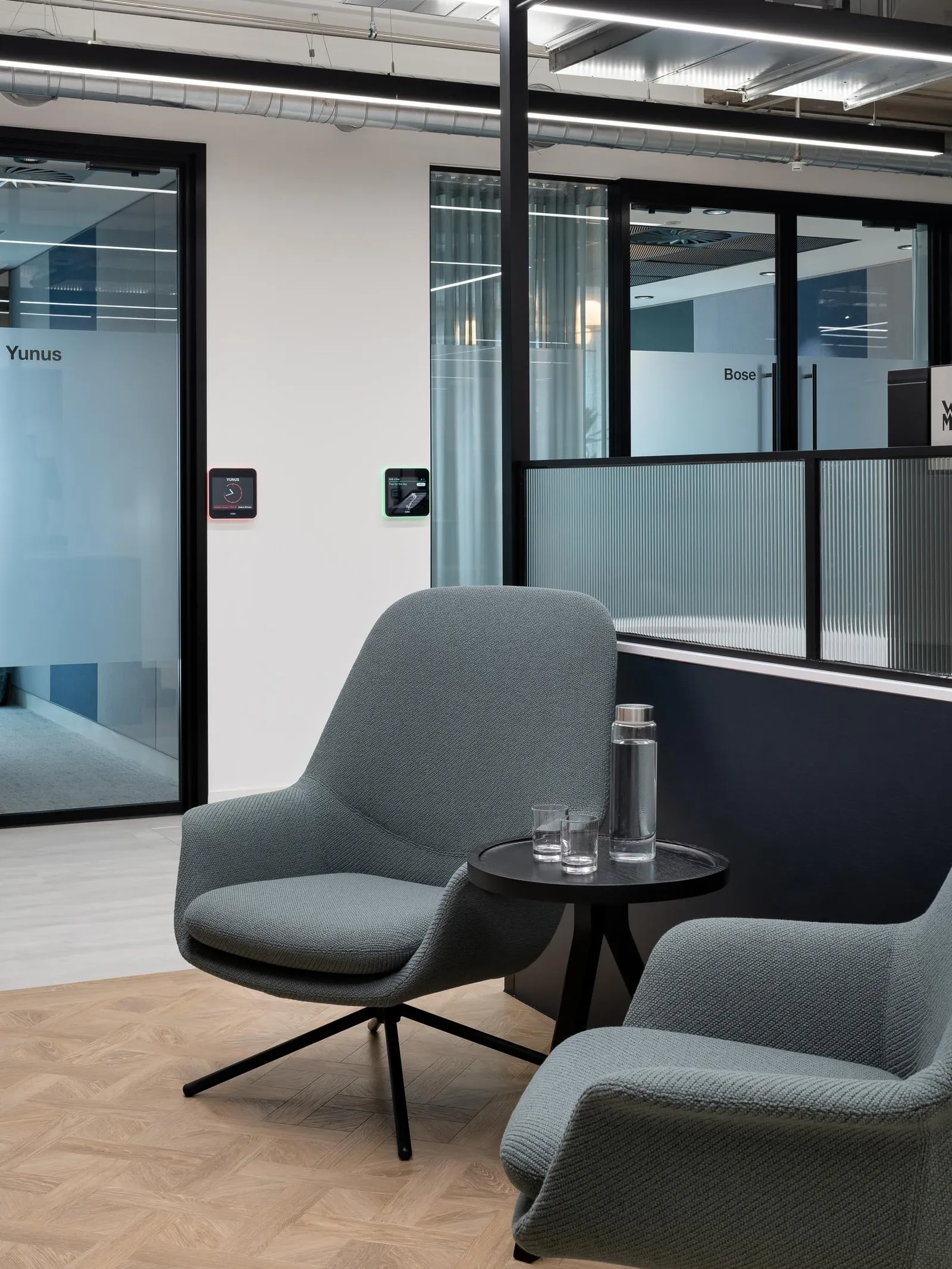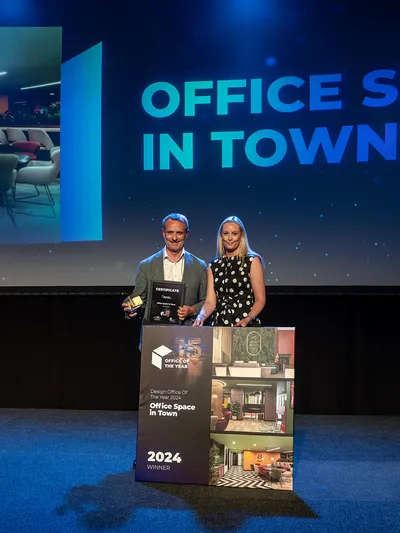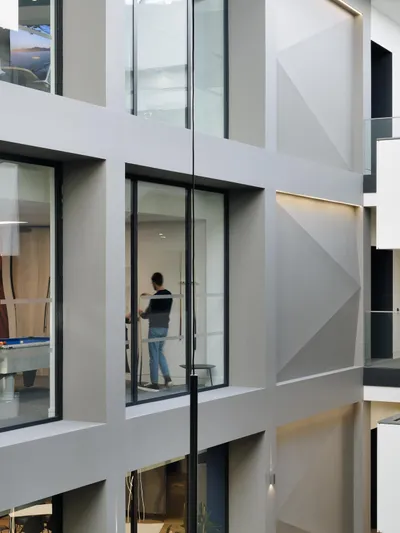There’s nothing like putting our heads together to get the creative juices flowing.
Don’t take our word for it, though. Research suggests that employees who worked collaboratively were 64% more likely to stick to their assigned tasks than their solitary peers. Not only that, employees who collaborated at work also increased levels of engagement, achieved higher success rates and reduced fatigue.
But the office environment has radically changed over the past few years - as have the ways in which we work together. Thankfully, collaboration’s no longer about huddling around in stuffy conference rooms with Post-its and pens anymore.
Well, that’s if teams are collaborating in the same office at all.
In the UK alone, almost half (44%) of the country’s employees are now hybrid working in some capacity; a number that’s only set to increase as the next generation of workers demands work-life balance. In fact, research suggests that three-quarters (73%) of Gen Z already desire permanent flexible working options from their employers. With all this in mind, it’s never been more important to find new ways to conjure that collaborative spirit - in person and from afar.
But how do we do that when our teams are becoming so disparate?
Some of the most successful collaborative spaces are looking towards the hospitality sector for inspiration. Think of those comfortable yet well-connected coworking spaces that feel just as sumptuous as they do state-of-the-art. That’s what today's employees are looking for when it comes to collaborative office design.
However, from making sure there’s adequate space for activity-based work to using your design to stimulate ‘lightbulb’ monuments, optimising for collaboration takes careful consideration.
So, what kinds of spaces do you need?
We’ll get to that shortly. First and foremost, though, it’s worth defining what we mean by collaborative.
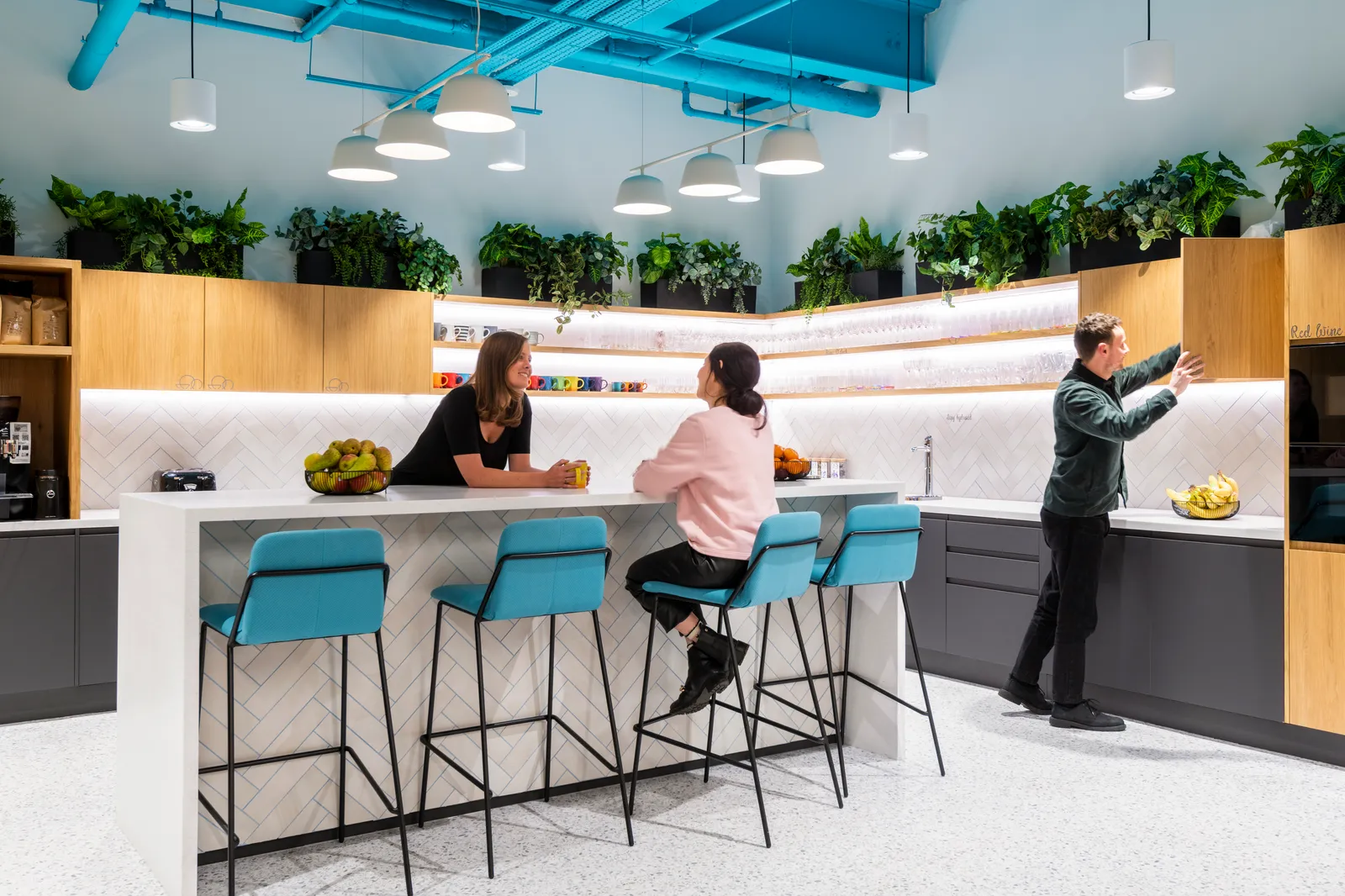
What makes a workspace collaborative?
A collaborative workspace is an environment that’s designed and equipped to facilitate and encourage collusion amongst individuals or teams. It goes beyond the traditional concept of an office or workspace, focusing on fostering communication, teamwork and the exchange of ideas. Cooperation and the pursuit of a common goal is at the heart of collaboration.
Sounds great. But how do you do it in practice?
The core principles of collaborative workplace design
If there’s one thing that’s true for modern workplaces, it’s that there is no template for collaborative working. At least, there shouldn’t be if you’re going to get the very best out of your talent today and long into the future. However, although there isn’t a strict one-size-fits-all approach to collaborative workspaces, there are a few fundamentals that can help organisational innovation thrive. Here’s what you should consider:
Promote creativity with flexibility
Research suggests that 63% of full-time employees are already working flexibly. And if they aren’t, the appetite to do so is there. Research suggests that as much as 87% of people would work flexibly if they could.
Why? Because, along with all the obvious benefits in terms of work-life balance, it also helps people be more creative at work.
“For the nation to stay competitive, employers need to facilitate the conditions for employees to create their best work,” says Heleana Blackwell, co-founder of The New Work Network, in ‘Can flexible working fuel your employees' creativity?’
Blackwell argues that, in order to do so, we need to increase employees’ sources of inspiration, e.g. giving them more than the same four walls to stare at each day. We’ve debated long and hard about whether or not open-plan offices kill productivity - and it certainly has its upsides. But, it’s not a solution that’s fit for every working style.
That said, employers can have their cake and eat it by creating a more flexible workspace; one that includes different areas for staff to collaborate together and also work privately in silos. Some things to consider include:
Flexible spaces and zoning
Try splitting open floor plans into designated ‘zones’ to help facilitate different types of collaborative work. For example, huddle spaces are perfect for agile sprints, project catch-ups and impromptu meetings.
Adaptable seating and furniture
Employees like to work in a variety of ways so, in order to maximise productivity and collaboration, it's a good idea to offer them a variety of flexible seating options. A productive workspace should always include ergonomic furniture to stop poor body posturing and keep people in the natural rhythm of work.
However, you could also cater for other styles of working using lounge chairs, standing desks, comfortable couches and communal tables. Mobile furniture is also a good idea as it can easily be rearranged, allowing teams to ‘hot desk’ and configure new collaborative spaces on the fly.
Balancing collaboration with confidentiality
To get the best out of your people, it’s important to ensure you offer them some personal space away from the noisier collaborative areas. Optimal designs encourage collaboration but still make room for private offices and pods for more focused discussions or confidential meetings.
Private space is also ideal for any ‘deep work’ and more concentrated tasks - especially when deadlines are looming. Just be sure to consider sound-absorbing materials, acoustic panels and other design elements that can help reduce noise and distractions.
But what about employees who can’t work together physically? Well, when it comes to workplace collaboration, there's no such thing as can’t. It’s all about using the right tech to bring teams together.
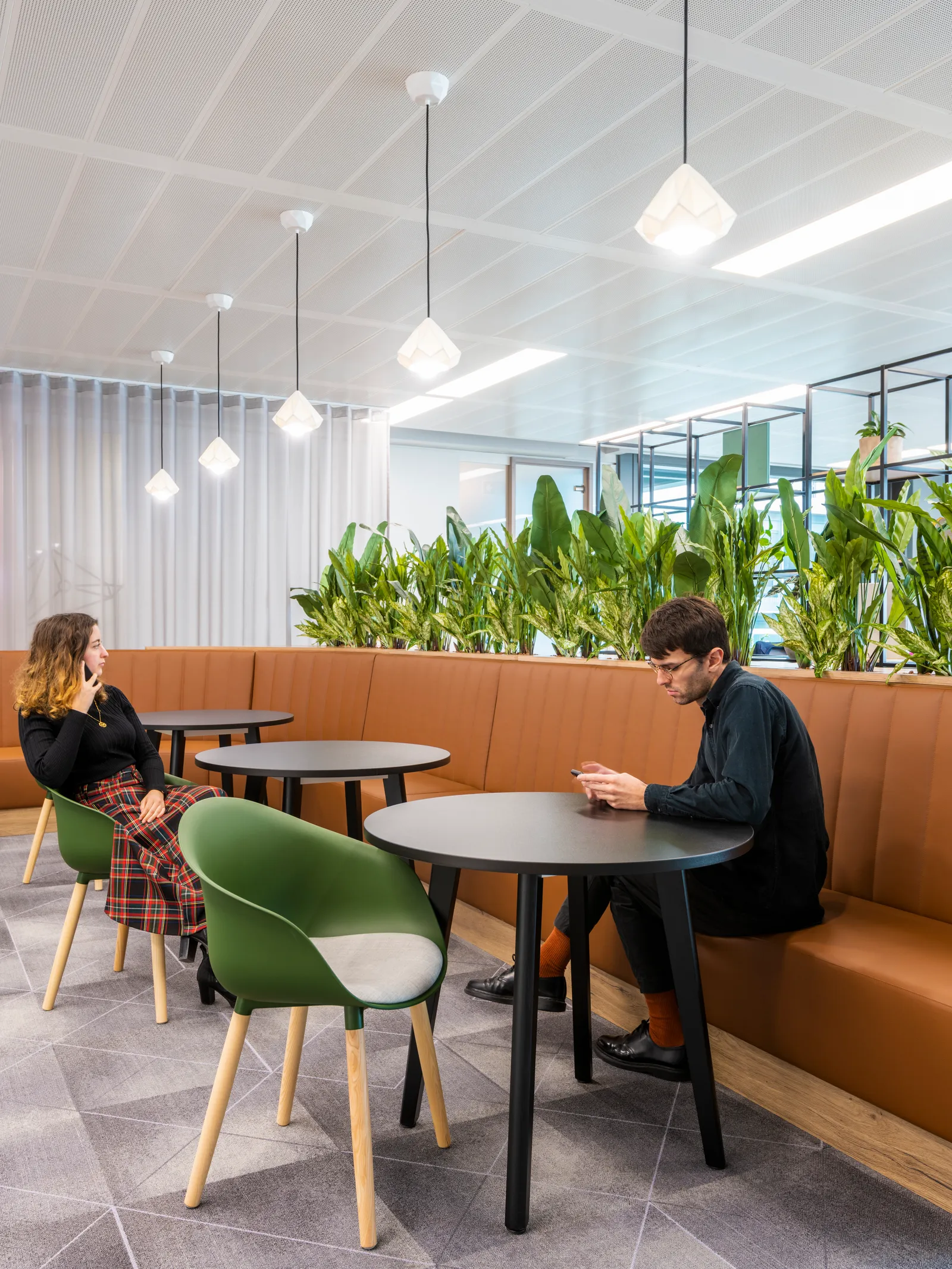

Encourage teamwork from anywhere
Hybrid workplaces are now the preferred choice for 63% of high-revenue growth companies. Moreover, today’s workers would choose a hybrid model 83% of the time (Accenture).
Why? Because with the right workspace design, remote employees can seamlessly dial in and join the room from anywhere. Technology is helping to foster collaboration in real-time, wherever staff may be in the world. In fact, 83% of employees already rely on technology for collaboration today. With that in mind, here are some crucial collaboration tools you can use to bridge the gap between physical and remote workers:
Video and web conferencing platforms
An essential in the hybrid-working world, you’ll want to ensure that you have the technical infrastructure to facilitate the likes of Zoom, Microsoft Teams or Google Meet. That includes the obvious high-speed bandwidth, microphones, cameras and presentation tools - but also an environment that employees feel comfortable working ‘together’ in. So creating dedicated zones for these activities is always a good idea. Webex or GoToWebinar are the best options if you’re bringing together a larger audience outside of the workplace.
Screen sharing and remote control
You could also try implementing TeamViewer for remote control, desktop sharing and online meetings. Alternatively, AnyDesk also provides reliable remote desktop access and screen sharing.
Instant messaging and project management
Slack is a popular choice for dedicated work chats and channels, and also allows teams to quickly ‘huddle’ from anywhere. And the likes of Asana, Trello and Monday.com can help teams stay on track together with visual boards and interactive workflows.
Document collaboration and storage
To allow teams to effectively collaborate in and out of the workplace, Google Workspace (formerly G Suite) or Microsoft Office 365 are everyday essentials. The latter also includes OneDrive which provides file storage, sharing and real-time co-authoring - but Dropbox also has useful collaboration features.
Virtual whiteboards and collaboration tools
Miro is a virtual whiteboard platform that’s ideal for brainstorming, planning and collaboration. Another option is Microsoft Whiteboard, which offers a digital canvas for drawing, writing and other creative tasks. Combine these tools with the right interactive display and your teams can create and collaborate comfortably from anywhere. MindMeister or Xmind are also good for collaborative brainstorming and more complex idea visualisation.
Virtual Reality (VR) collaboration
Looking towards the future, VR is also becoming a popular tool to bring physical and remote employees together. For example, Spatial allows users to meet in a virtual environment, collaborate on 3D models and share content.
But as exciting as all of this is, these tools are nothing without a physical space to support them. One that both stimulates the imagination and supports a culture of innovation.
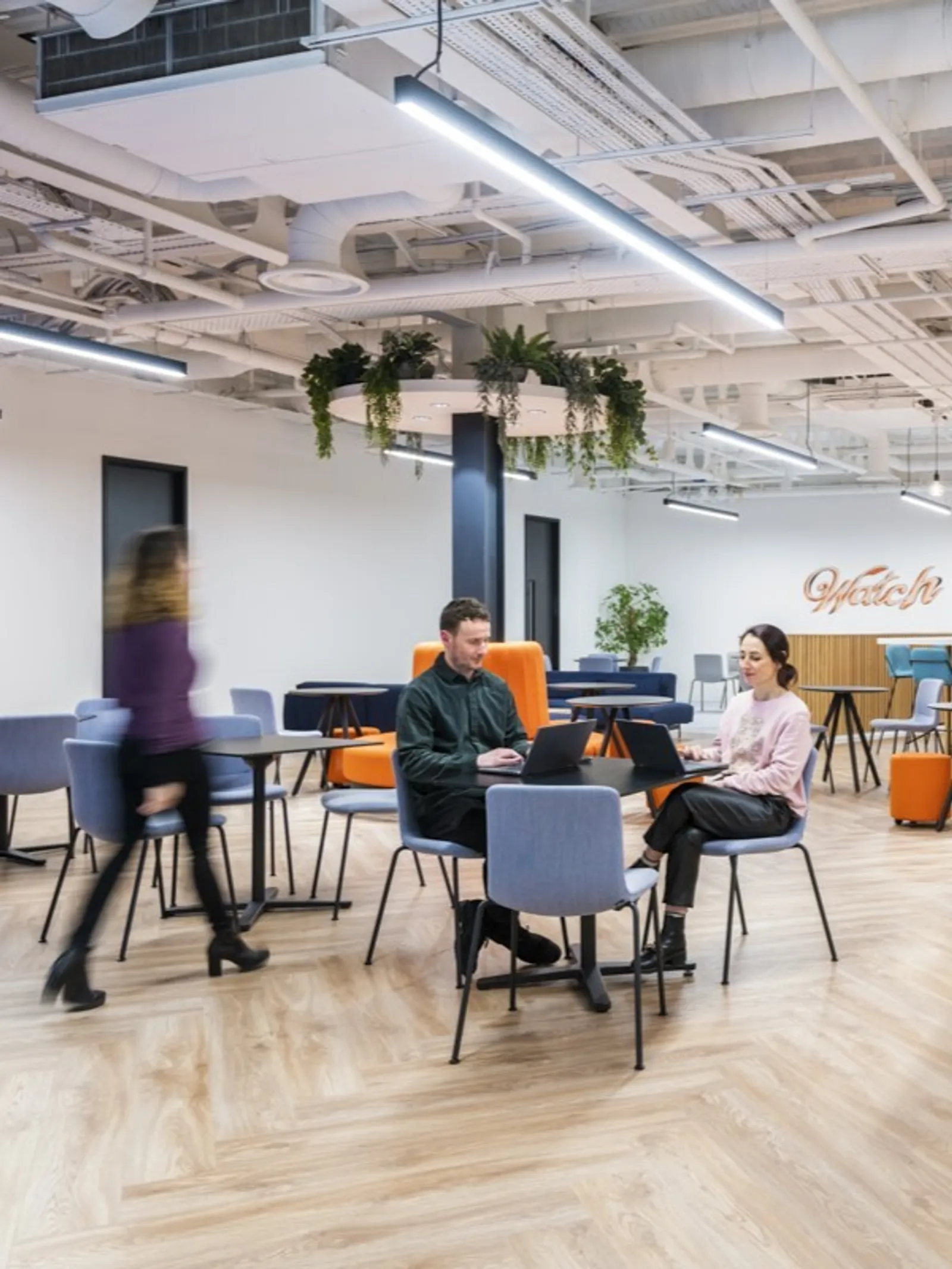
Nurture culture and community
If the events of the past few years have taught us anything, it’s that people are social creatures. We inherently crave connection and a workspace that’s geared up for collaboration can not only spark innovative ideas, but can foster a sense of community too.
By optimising your workspace design, using common spaces that go far beyond the drab and outdated canteen, you can create that buzzing atmosphere that teams can't wait to be a part of. Each and every serendipitous interaction is just another step towards building a thriving company culture; one that isn't just great for your bottom line, but crucial for your brand reputation too.
When research shows that 88% of job seekers say that a healthy culture at work is vital for success, it’s never been more important to spend as much effort stimulating an impromptu social interaction as we do more structured creative thinking. After all, collaborating on creative tasks is more fun and fruitful when we’re together - so turn your workplace into a destination that every employee wants to return to.
Essentially, the modern office must have a purpose for being. Now more than ever before, there’s just too much choice for it not to. But through well-thought-out design - one that puts people front and centre in the design process - the office can ensure culture flourishes, collaboration thrives and productivity levels soar.
The good news is that research suggests Europe is leading the charge when it comes to returning to the office. In fact, it’s now back up to 70% of pre-pandemic levels. Here’s how we helped one of our clients create a collaborative workspace design that’s enticing employees back.

Jaguar Land Rover - helping Hungary’s tech talent collaborate
Working in collaboration with The Instant Group, our brief included the design and delivery of a complete workplace transformation with office space, collaboration areas, social support space, specialist simulator facilities and employee entertainment amenities. The design solution needed to comply with our co-created comprehensive workplace guidelines, with a clear design language that was consistent with their global workplace portfolio. Importantly, it also needed to take into account Budapest’s cultural considerations.
The project team – including Jaguar Land Rover’s property design teams and the chief engineer – employed a practical solution, balanced with strong logistical planning. Together, we focused on creating improved visual connections between private and social areas to enhance the feeling of unity between the organisation’s administrative and engineering teams. The result is a contemporary and multi-functional environment that’s light and spacious, with conventional open-plan working areas and meeting rooms.
Innovation, collaboration and the wellness of people at this facility are all at the heart of its success. Blurring the boundaries between visual transparency, precise movement and social spaces has broken down the communication barriers between JLR employees. Importantly, this space takes inspiration from its surroundings, while also serving the modern-day needs of the design-conscious workplace.
Rich brown and gold tones guide the entire project, used for flooring, bespoke wall treatments, joinery and furniture. Importantly, the team built flexibility into many aspects of this SKA Gold workplace - with an abundance of informal meeting and collaboration areas, focus work points and generous communal spaces. Jaguar Land Rover further extends its reach throughout the building – with every wall wrapped in glass. This literal transparency reiterates the notion of community, workplace collaboration and connection to the surrounding site and nature.
Looking for a more collaborative workplace design?
From creating state-of-the-art collaborative spaces to common areas where company culture thrives, our FREE guide ‘Designing & Delivering Inspiring Workplaces Across Europe’ has everything you need to get started. Learn how some of our biggest clients have transformed the workplace into a destination that employees just can't wait to collaborate in.

